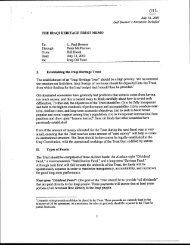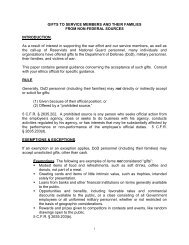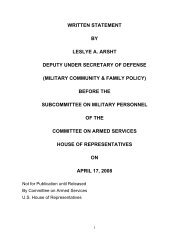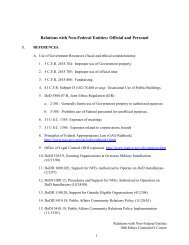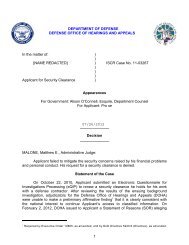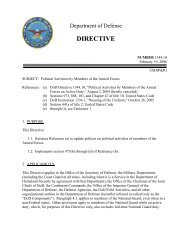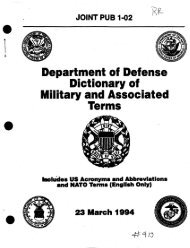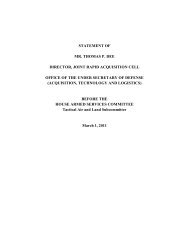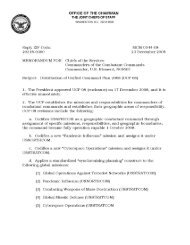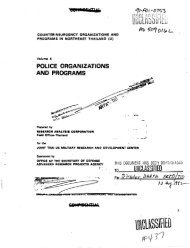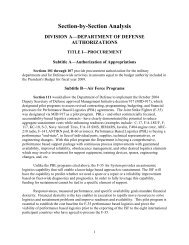dod tactical herbicide sites - United States Department of Defense
dod tactical herbicide sites - United States Department of Defense
dod tactical herbicide sites - United States Department of Defense
Create successful ePaper yourself
Turn your PDF publications into a flip-book with our unique Google optimized e-Paper software.
DOD TACTICAL HERBICIDE SITESSite 31Location: Storage and Operation PACER HO, NavalConstruction Battalion Center, Gulfport, MississippiDate → December 1968 – February 1989Activity Description: After August 1966, the Port <strong>of</strong> Embarkation for the“Tactical Herbicides Orange, White, and Blue” was the Port <strong>of</strong> Mobile, Mobile,Alabama. As the <strong>tactical</strong> <strong>herbicide</strong> inventory began to build up in Vietnam in 1968, theSan Antonio Air Materiel Area (SAAMA), a component <strong>of</strong> the Air Force LogisticsCommand (AFLC), temporarily discontinued shipment from the Port <strong>of</strong> Mobile Outportin order “to avoid exposing large quantities <strong>of</strong> <strong>herbicide</strong>s to possible damage by enemyaction.” Since the Port <strong>of</strong> Mobile was routinely used as the port <strong>of</strong> embarkation,SAAMA arranged for the excess <strong>tactical</strong> <strong>herbicide</strong>s to be temporarily placed in storage atthe Naval Construction Battalion Center (NCBC), Gulfport, Mississippi. About 10 out <strong>of</strong>every 10,000 drums received at the Outports during 1968 were damaged or defective.Most <strong>of</strong> the leakage occurred as a result <strong>of</strong> punctures (from forklifts) or split seams. Thus,when NCBC agreed to temporarily store the <strong>herbicide</strong>, it required SAAMA to providefunds and 17 personnel (civilian, contract) to perform storage and warehousing functionsassociated with the <strong>herbicide</strong> program.The NCBC outside storage area was about two miles from the Gulfport Outport Docks,with convenient access to the railroad. It was fenced and isolated from public traffic. TheNCBC provided surveillance as well as controlled access. The outside storage wasplanned and set up for long-term storage. To provide good drainage, 2 x 6-inch dunnage(creosoted lumber) was laid on a hard surface and drums, positioned horizontally with thebung closure point outward, were stacked in double rows, three high, in pyramidalfashion. With the decrease use <strong>of</strong> <strong>tactical</strong> <strong>herbicide</strong>s in Vietnam in 1969, the inventory <strong>of</strong>Herbicide Orange at NCBC began to increase. On 4 November 1969, the AssistantSecretary <strong>of</strong> <strong>Defense</strong> placed a restriction on the use <strong>of</strong> Herbicide Orange in Vietnam.However, all Herbicide Blue and Herbicide White continued to be sent to Vietnam. On15 April 1970, the <strong>Department</strong> <strong>of</strong> <strong>Defense</strong> issued a total suspension <strong>of</strong> the use <strong>of</strong>Herbicide Orange in all military operations in Southeast Asia. These actions leftapproximately 832,000 gallons <strong>of</strong> Herbicide Orange in storage at the NCBC that had to71



